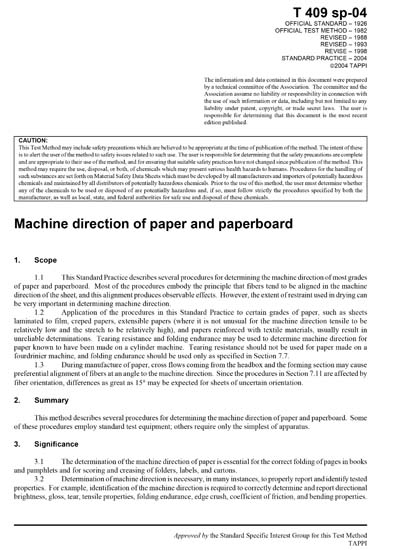Historical
T 409
Machine direction of paper and paperboard
Application of the procedures in this Standard Practice to certain grades of paper, such as sheets laminated to film, creped papers, extensible papers (where it is not unusual for the machine direction tensile to be relatively low and the stretch to be relatively high), and papers reinforced with textile materials, usually result in unreliable determinations. Tearing resistance and folding endurance may be used to determine machine direction for paper known to have been made on a cylinder machine. Tearing resistance should not be used for paper made on a fourdrinier machine, and folding endurance should be used only as specified in Section 7.7. During manufacture of paper, cross flows coming from the headbox and the forming section may cause preferential alignment of fibers at an angle to the machine direction. Since the procedures in Section 7.11 are affected by fiber orientation, differences as great as 15ø may be expected for sheets of uncertain orientation.
Content Provider
Technical Association of the Pulp and Paper Industry [tappi]






